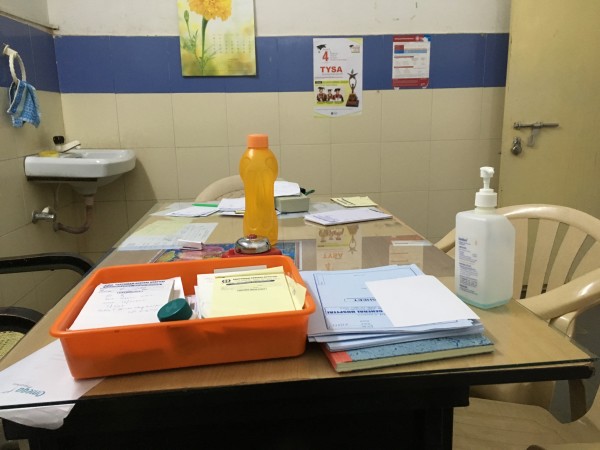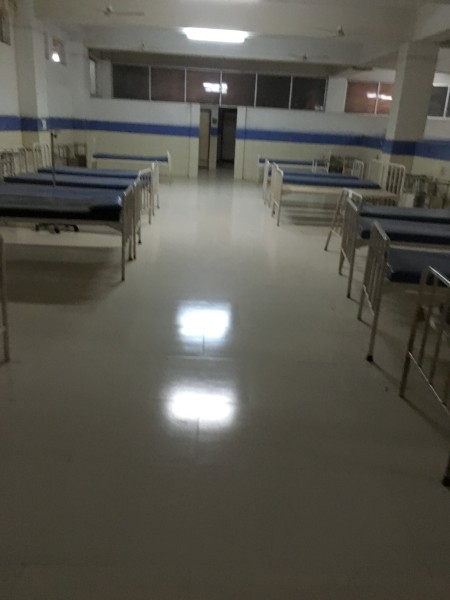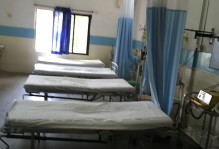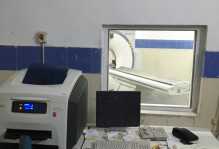Obstetrics and Gynaecology at Santhiram
A day before the Dussehra festivities began, Santhiram general conducted a large scale pooja (a praying ceremony) known as ayudha pooja (ceremony for weapons) for all of the expensive machines in the hospital. This ceremony is intended to ensure that machines work well throughout the next year.
While the pre-Dussehra celebrations were going on in the operation theater, I was taking case-related notes in the OBGYN out-patient room. Most of the patients in OBG OP are pregnant women coming for a regular check-up (visits are tracked through a government-provided booklet). Unless problems are present, there is an examination of fetal heartbeat and an occasional ultrasound, and the patients are sent home without admission. If any complaints are present or the pregnancy is in term, patients are persuaded to get admitted and have their husband present in the hospital for complications that may occur during the stay. In my time in the OP room, the most common problem present in pregnant women is anemia resulting from malnutrition, an issue mainly present in rural areas. Blood transfusions are used as treatment, and iron supplements are given to help raise abnormally low hemoglobin levels. Using methods such as these, the obstetrics department helps ensure that pregnancies occur safely in all women.
In rural areas, government-sponsored educational and medical programs are used to diagnose and treat health conditions in pregnant women. In large villages, primary health centers are present, and they employ two or three nurses who go to smaller villages and hand out books that keep a record of the mother’s doctor visits during pregnancy and future immunizations of the child. These nurses also deal with problems occurring during pregnancies and refer complex conditions to close-by hospitals (such as Santhiram) for treatment. In addition to offering free medical support, these nurses educate rural populations about the number of kids each family should have based on its socioeconomic status. Taken as a whole, the Indian government is supporting sustainable and safe development through regulation of maternal health.
Along with my observation of OBG OP, I watched three C-sections and a normal delivery in the OT and labor room, respectively. Not only did I learn the specifics of both types of delivery but I also got to witness the birth of four newborns. The normal delivery was definitely the most suspenseful and stressful “procedure” that I viewed so far. The mother was conscious and screaming throughout the delivery, so I was tense waiting for the baby to arrive. After the delivery, I felt really accomplished, even though I didn’t help with anything related to the procedure. The day after these procedures was filled with some more OBG OP work, and, on the day before Dussehra, I completed my OBG posting.
Along with my regular work at the hospital, I went to the OBG department for part of the night shifts. For doctors, these shifts consist of walking to different OBG wards and checking fetal blood pressures. In between, emergency admissions are made and surgeries are scheduled. At night, PGs and interns sleep in special rooms inside the hospital and are called upon for any questions or complaints. These night shifts are designed to provide emergency care to women at all times and are another step in ensuring quality care.
Last week, I also spent three days in the orthopedics department during which I saw a four-hour long surgery, various OP procedures, and doctor-patient conversations. Saving the description of those events for another week: look out for another post in a few days!





No comments.
Comments are currently closed. Comments are closed on all posts older than one year, and for those in our archive.